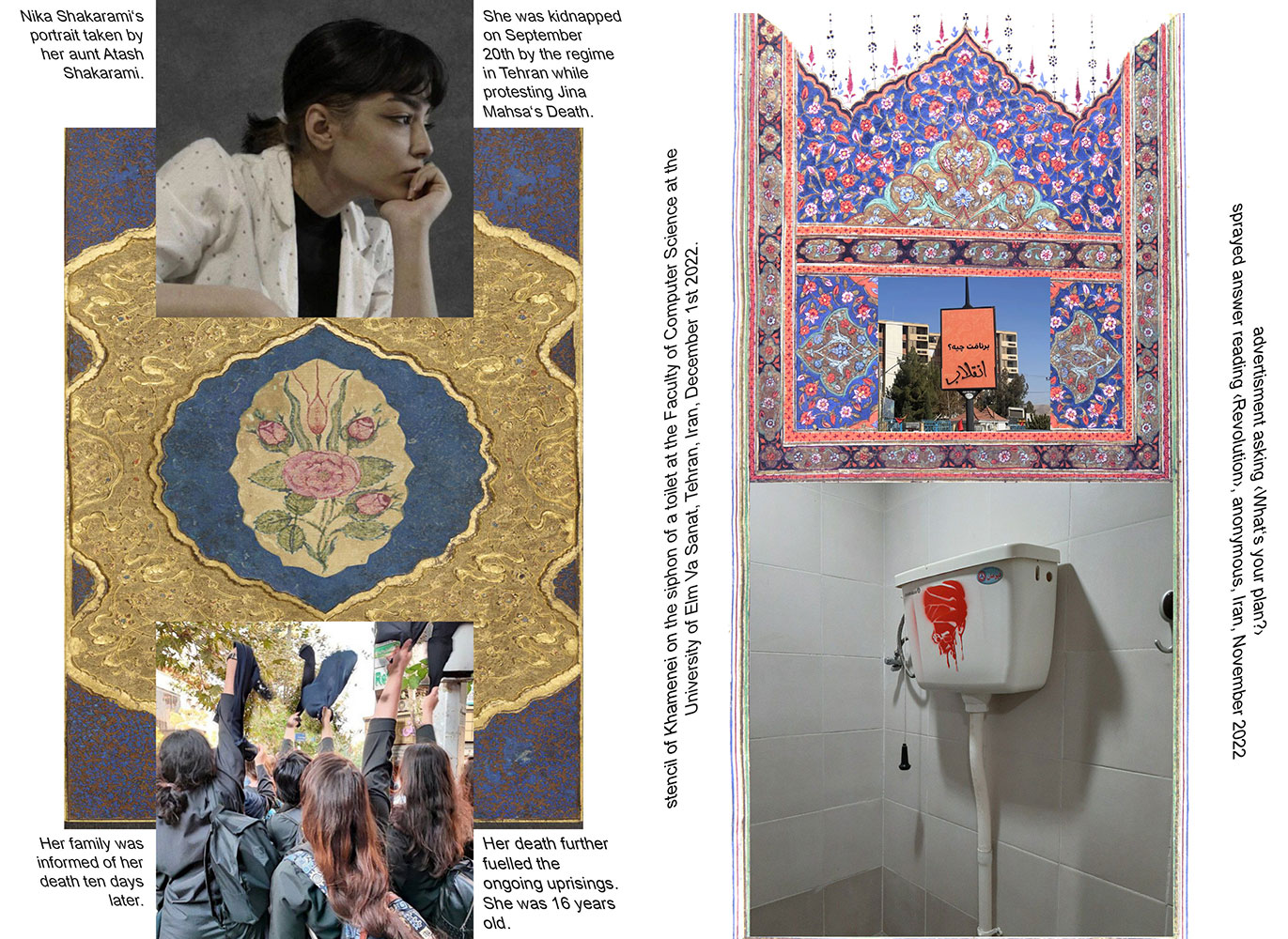PRESENTATION: Visual Poetry-Contemporary Posters from Iran
 The exhibition “Visual Poetry – Contemporary Posters from Iran” presents contemporary posters from Iran and shows how designers there combine unorthodox interpretations of their Persian cultural heritage with contemporary trends in international graphic design. In view of the ongoing protests against Iran’s deeply repressive regime, the exhibition has been augmented by additional graphic exhibits that shed light on the current situation.
The exhibition “Visual Poetry – Contemporary Posters from Iran” presents contemporary posters from Iran and shows how designers there combine unorthodox interpretations of their Persian cultural heritage with contemporary trends in international graphic design. In view of the ongoing protests against Iran’s deeply repressive regime, the exhibition has been augmented by additional graphic exhibits that shed light on the current situation.
By Dimitris Lempesis
Photo: Museum für Gestaltung Zürich Archive
The Poster Collection of the Museum für Gestaltung Zürich boasts a major collection of Iranian posters, which was recently enlarged by a further 200 works dating from the past twenty years. The focus of the exhibition “Visual Poetry – Contemporary Posters from Iran” is on these new acquisitions. As varied as their styles and approaches are, they all manifest the quest for an amalgam of the historical and the contemporary, of Persian tradition and Western inspiration, of the artistic and the quotidian. The posters also stand for creative license in times of crisis, since their often symbolically encoded poetic imagery has the power to break through the cultural and political restrictions of the system. While some posters seem to confirm the usual Western preconceptions about Islamic aesthetics, others radically undermine them and may well surprise or even confound us. They must also be understood as a medium that defies the regime’s hegemonic claim to sole custody of the Persian cultural heritage. By advertising a wide range of events, moreover, the posters also invite us to par-take in the multifaceted, outward-looking cultural life of many Iranian cities. Artistic Self-Perception: Iranian graphic designers share a perception of themselves as artists. While the typical Iranian city-scape is dominated by gigantic billboards blazoned with advertising or state propaganda, posters announcing cultural events tend to be displayed inside buildings and are targeted at an educated audience. Most advertise an exhibition or theater festival, a film screening or a concert, while a few are simply “homage posters” honoring key figures of Persian history, both religious and secular. Whether the focus of the forthcoming event is Iran’s cultural heritage or the contemporary urban art scene is frequently revealed by the color scheme, calligraphy, and graphic idiom. Calligraphy, Poetry and Book Illumination: The most conspicuous mode of expression in Iranian posters is calligraphy. Persian characters are so complex that for a long time they could be written only by hand and reproduced only by lithography. Persian calligraphy, whose sophistication is in part a consequence of Islam’s prohibition of im-ages, is still cherished and cultivated even today. The first digital alphabets began to appear in the 1980s, when developers set out to retain the aesthetic potential of Farsi script even while channeling it into a modern typography. This was in part a response to the West’s one-sided view of Persian calligraphy as an exclusively spiritual, almost folkloric cosmos. Persian poetry, which is deeply rooted in everyday culture, and the rich heritage of book illumination together laid the groundwork for the interaction of script and image that is so central to poster art and that is constantly being re-interpreted and translated into a modern idiom. History of Iranian Graphic Design: Iranian graphic design is a relatively recent development. The first Iranian designers to create painterly, illustrative posters began work in the 1960s, when Iran’s forced opening to the West was promoting cultural exchange on a global scale. Like their counterparts in the West a hundred years earlier, they all had a background in the fine arts. The proclamation of the Islamic Republic in 1979 greatly impeded the development of Iranian graphic design, as did the Iran-Iraq War that followed soon afterwards. Towards the end of the 1980s, however, a new generation of designers began building on the graphic legacy of the pre-war era and by the dawn of the new millennium, Iranian posters were taking international festivals by storm, attracting widespread attention in the West. Resistance and Solidarity: After the uprisings of 2009 and 2019, the latest wave of protests sparked by the violent death of Jina Mahsa Amini in police custody in September 2022 shows no signs of abating, despite the brutality used to quell it. Social media is full of visual commentaries on these latest protests, some of them calling for continued resistance, others just declaring their solidarity. A selection of these virtual messages is presented in an extra show within a show: Revolution der Anonymen (Revolution of the Anonymous) is a mini-exhibition curated by Alexander Cyrus Poulikakos, Niloofar Rasooli and a third person who wishes to remain anonymous in December 2022. It brings together cards, stencils and videos that capture the historic events currently unfold-ing in Iran.
Photo left & Right: Karten der Revolution, curated, compiled and translated by Alexander Cyrus Poulikakos, Niloofar Rasooli and an anonymous collaborator. The creators of the contents remain anonymous in Iran, December 2022, © Alexander Cyrus Poulikakos, Niloofar Rasooli
Info: Curator: Bettina Richter, Museum für Gestaltung Zürich, Pfingstweidstrasse 96, Zürich, Switzerland, Duration: 21/7-29/10/2323, Days & Hours: Tue=Wed & Fri-Sun 10:00-17:00, Thu 10:00-20:00, https://museum-gestaltung.ch/








